Sowing Seeds: A handful of Arizona auto shop students receive the lesson of a lifetime
Posted on Mar 20, 2022 in Featured | 2 comments
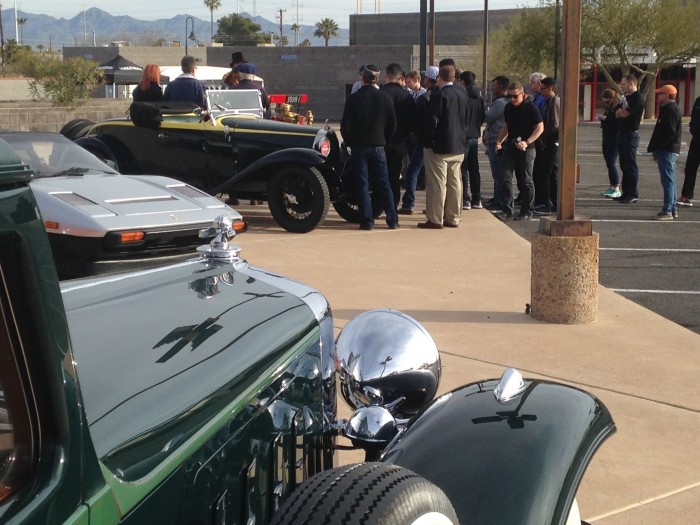
By his best reckoning, 17-year-old Daniel Gamboa has only driven a stick-shift car about eight or nine times in his life. But he shows no reticence in inching closer to the wheel of Brad Phillips’s 1983 Ferrari 308 GTS QV. Phillips has owned this car for exactly 24 hours before volunteering it for Hagerty’s Driving Experience, a program designed to expose young enthusiasts to seat time in an array of classic and antique vehicles. As a one-owner car, he figures the Ferrari has had only four different drivers in its 33-year existence. Young Daniel is about to become the fifth.
If you’ve ever taught someone how to drive with a manual transmission, you are acutely aware of the patience and verbal restraint required. Now ask five classic car owners – some with cars exceeding $1 million in value – to exercise that same patience with 10 unrelated teens and you have the making of a remarkable afternoon. Hagerty’s trial program has recruited these exhibitors from the Arizona Concours to an empty dealership in Scottsdale to impart some hands-on experience to a group of high school students from the Phoenix area. Five passionate owners putting their time and property on the line to act as ambassadors of the classic car hobby to the next generation.
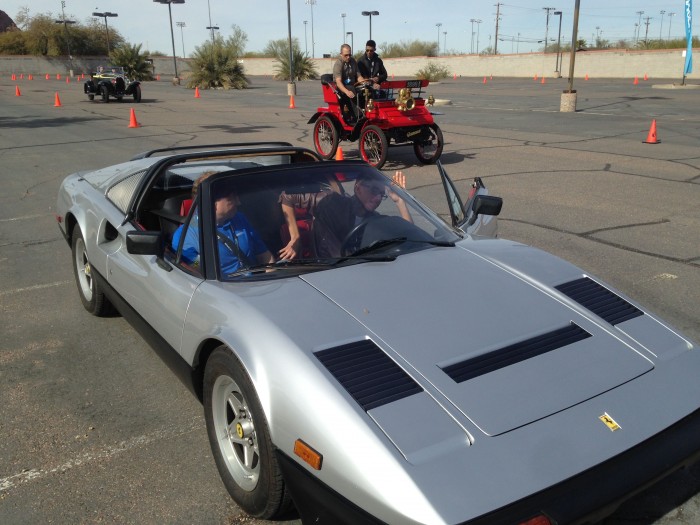
The stakes are high. The very survival of the industry is at risk. Without passing the torch to younger folks through firsthand exposure, the cars and culture we love will falter. On a more sobering note, so will our investments. Hagerty hopes to develop this program and hand off the matrix to local and national car clubs, so that they may take the lead in cultivating the next generation of enthusiasts. With a reported 70 percent of eligible high schoolers seeking a driver’s license, interest in driving is waning. Which in turn fuels ideas like autonomous vehicles and general malaise in design and performance. In an attempt to attract Generation Electric, today’s cars have become loaded with distraction – Wi-Fi, Bluetooth and more – which leads to an unintended opposite reaction: Driving becomes more sterile and less tactile, intuitive and rewarding.
But that all seems very far away at this moment. The teens are engaged; listening intently to the instructions of the owners and supporting the efforts of their classmates. The mood is easy and light; smiles abound. And perhaps the most amazing thing is that no one has checked a smartphone text, email or Facebook status in over an hour.
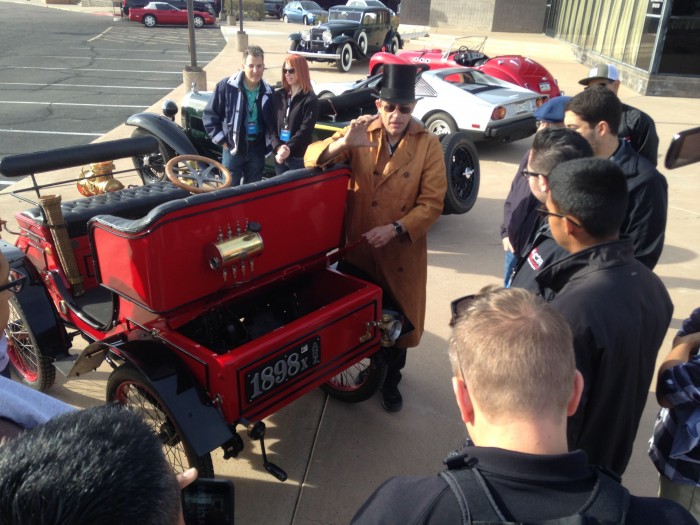
There is a nice selection of cars here, emblematic of 120 years of automobile technology. The oldest and most unconventional car of the day is the 1898 Jeanperrin Voiturette. Utilizing a single-cylinder atmospheric engine and total-loss oiling system, the car was quite the hot-rod of its day with a top speed of 28 to 32 MPH; a number undoubtedly dependent upon road grade. The teen boys mistake it for a wooden mock-up of a Mars Rover. But the car’s enthusiastic owner, Alan Travis of Phoenix – replete in period driving garb – sets about explaining the history of the first horseless carriages and the repressive traffic laws of Victorian-era Britain that led to the now celebrated London-to-Brighton Run. Mr. Travis explained the “Vis-à-Vis” feature, the “Face-to-Face” seating, that gives the model its designation. The car was an unexpected hit to operate; teaching the young drivers the valuable lesson of power-to-weight performance.

Teaching the lesson of torque versus horsepower was left to the Stutz, on loan from Allentown Classic Motor Cars. The lumbering 1933 DV-32 could easily be confused with Europe’s grandest marques with its low-slung aluminum Monte Carlo coachwork. Its four-valve-per-cylinder, dual-overhead-camshaft, hemi-headed straight-eight engine rivaled the best of the period. “The Car That Made Good in a Day” did so again, driving home the opulence and craftsmanship of the Full Classics to the young enthusiasts.
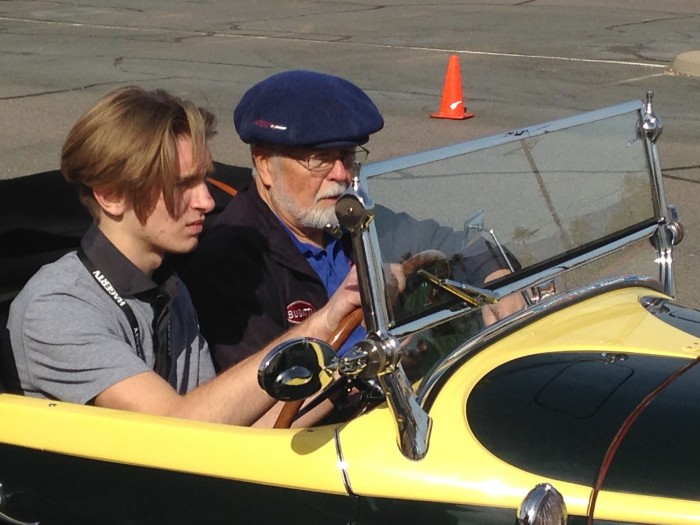
Demonstrating that cars of that era could also be light and agile was the 1931 Bugatti Type 40A owned by Jim Stranberg of Loveland, Colorado. Stranberg, a renowned Bugatti restorer and judge, shared his car with the confidence that comes only from knowing firsthand how to fix anything that could break. Equally educational was the 1951 Allard K2 of Jed Rapoport of Macungie, Pennsylvania, a car representative of the hit-and-miss postwar formula of big engine/light car that set the tone for performance for generations.
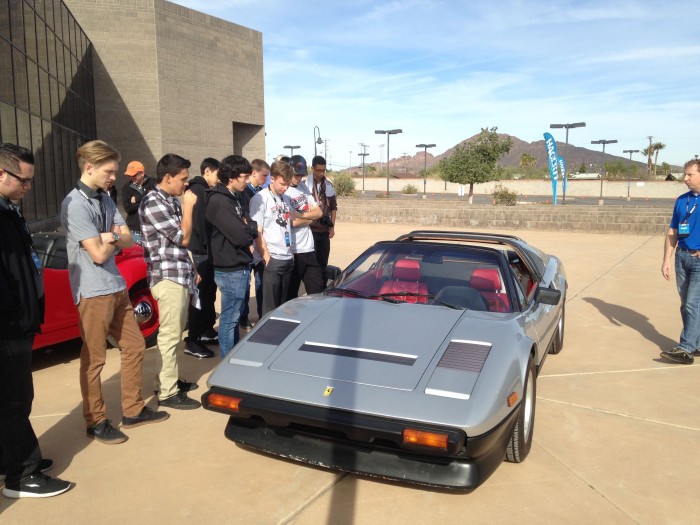
But let’s face it, we are dealing with red-blooded American boys here, and the Ferrari holds sway. Sharp elbows jockeyed for position near the Italian sports car, like alley cats waiting outside of a butcher’s back door. At one point I feared for Phillips’s safety, standing between the adolescent mob and his new 308. But I understood. It took me 30 years to drive my first Ferrari, and I certainly recognize the gleam in these young eyes. It’s the future of the collector car hobby.





.gif)


What a great idea. I notice that they are all boys, it would be interesting to see something like this pitched to girls, too.
If anyone sets something like this up in the Northeast, let me know, I’ll find something interesting to bring.
We (white MGA) were involved with this program last year. It can be seen on “Chasing Classic Cars” season 8, session 2 and of course, Wayne is teaching a girl !